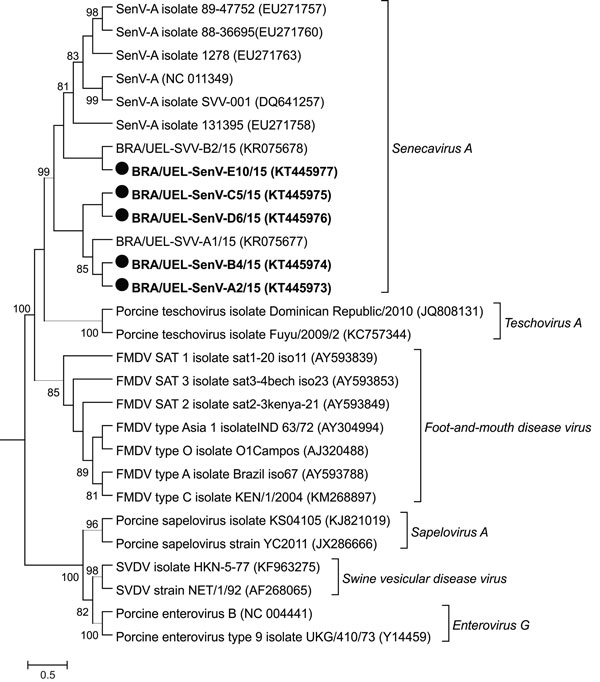Volume 22, Number 7—July 2016
Dispatch
Clinical Manifestations of Senecavirus A Infection in Neonatal Pigs, Brazil, 2015
Figure 2

Figure 2. Phylogenetic relationship of strains of Senecavirus A identified in Brazil during 2015 (black circles) and other sequences available in GenBank derived from species of picornavirus associated with vesicular disease. Maximum-likelihood phylogenetic tree construction used the Kimura 2-parameter model with γ distribution based on the partial viral protein (VP) 3/VP1 region of the Senecavirus A genome. GenBank accession numbers are given in parentheses. Bootstrap values determined in 1,000 replication. Scale bar indicates nucleotide substitutions per site.
1These authors contributed equally to this article.
Page created: June 14, 2016
Page updated: June 14, 2016
Page reviewed: June 14, 2016
The conclusions, findings, and opinions expressed by authors contributing to this journal do not necessarily reflect the official position of the U.S. Department of Health and Human Services, the Public Health Service, the Centers for Disease Control and Prevention, or the authors' affiliated institutions. Use of trade names is for identification only and does not imply endorsement by any of the groups named above.